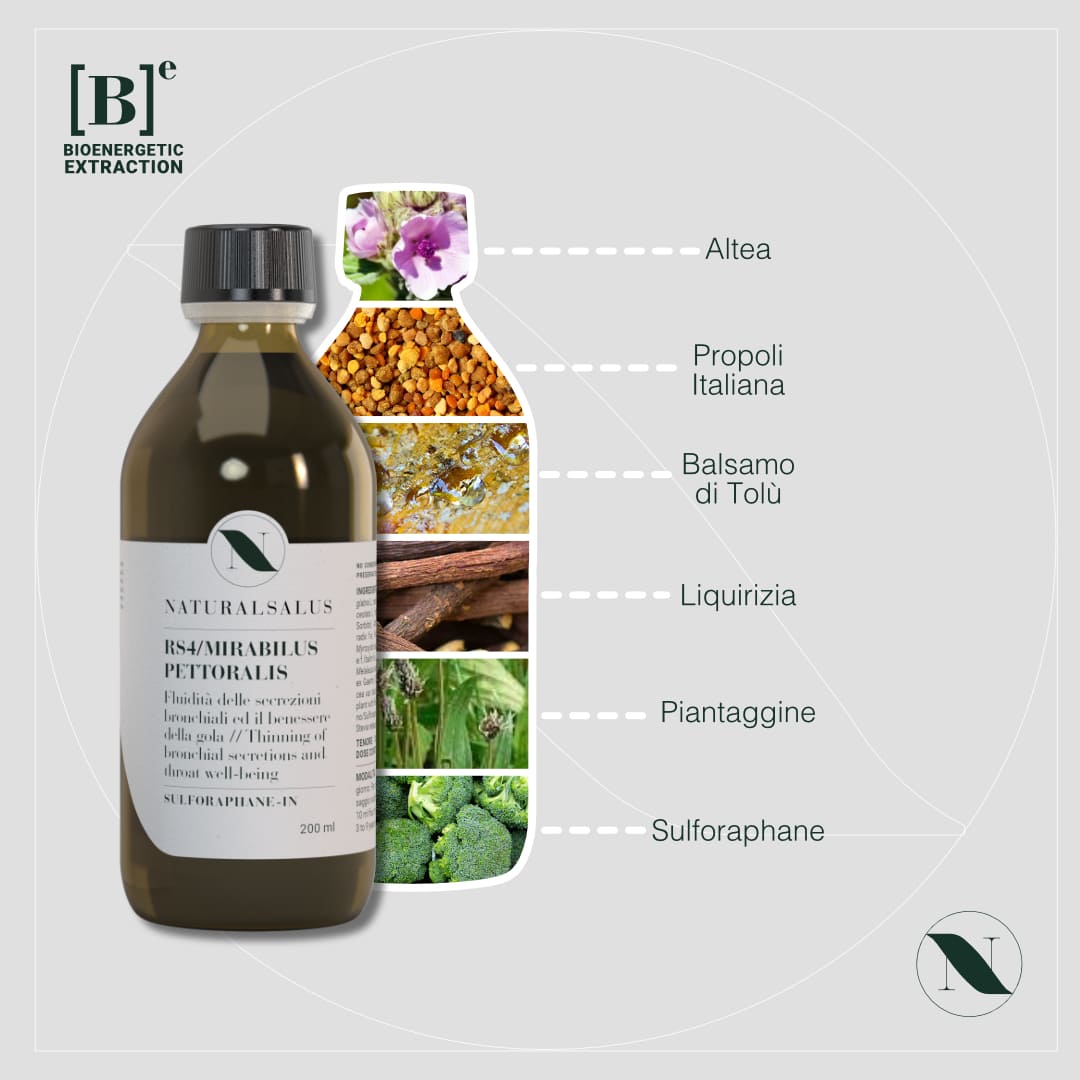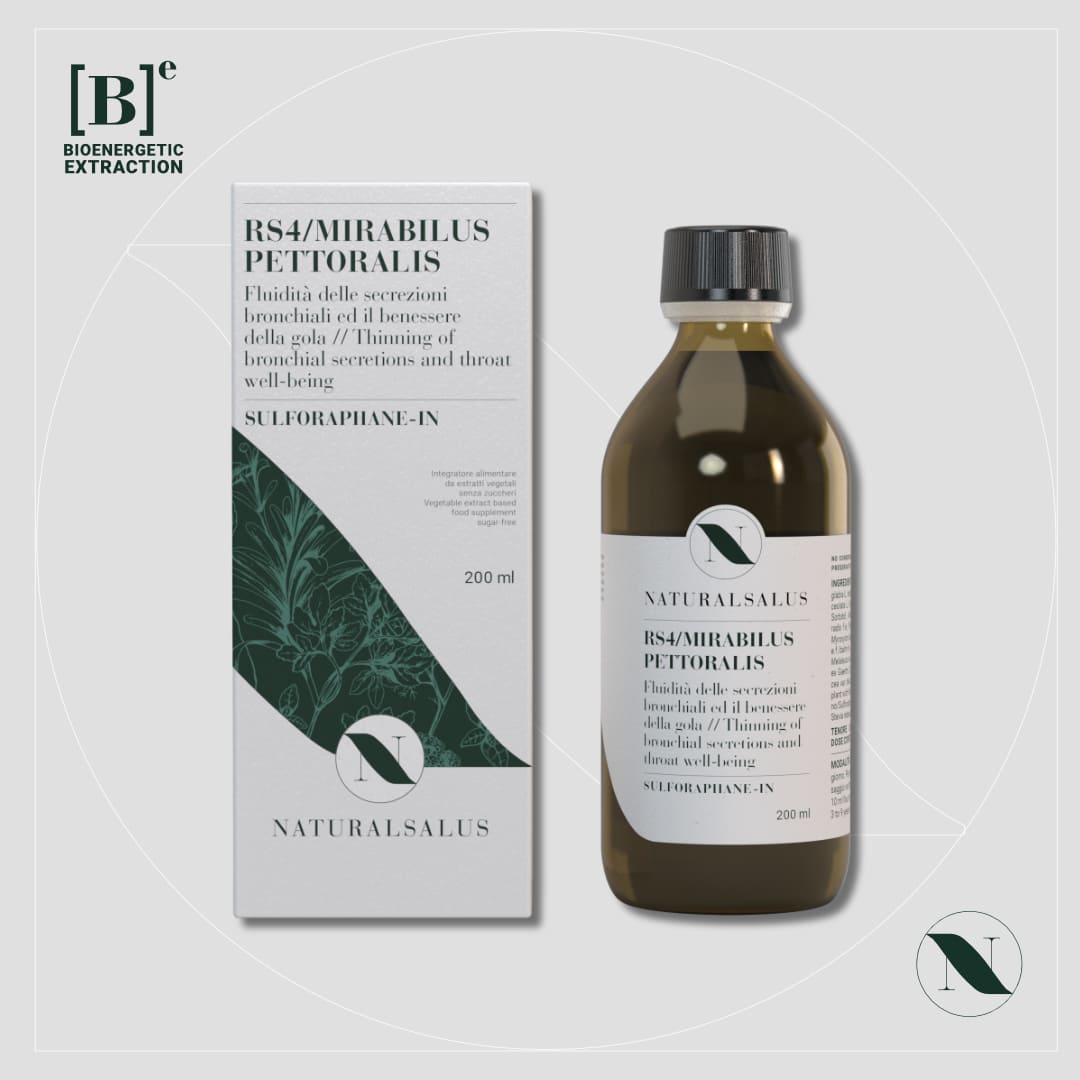

RS4/MIRABILUS® PETTORALIS
Fluidity of bronchial secretions – Dry cough
RS4/MIRABILUS® PETTORALIS is a syrup with a fluidifying component for seasonal disorders, it helps to counteract the major associated problems, such as dry cough, sore throat and cooling symptoms.
Sugar free, therefore suitable for use by diabetics or those intolerant to sugar.

RS4/MIRABILUS® PETTORALIS
Sale price€18,90

RS4/MIRABILUS® PECTORALIS



Esplora altre aree di benessere
Scopri tutti gli altri prodotti, organizzati per disturbo, beneficio, fase di vita o stile di vita, e trova gli integratori naturali più adatti alle tue esigenze.



